Before I started practising yoga, I had no idea about the power of the breath in regulating the body. This changed twenty two years ago when I began to practice yoga and then within a couple of years trained to teach yoga. I became aware of the yogic practice of pranayama, a practice of breath regulation, with prana meaning “life energy” and yama meaning “control”. Practising pranayama can strengthen the mind and body connection, as well as promoting mindfulness and relaxation. It can also be used to improve lung and brain function and to regulate blood pressure.
Initially, I found it quite tricky to regulate my breathing, as part of my yoga practice, as the concept seemed very alien to me and I hadn’t really thought about my breathing before this time, other than in biology lessons…..my body just breathed. I learned about the four phases of breathing: breathing in, pausing with the breath held in, breathing out and pausing with the breath held out. I also learned and practiced different ratios of breathing, such as square breathing, with the same count for all four phases of breathing.
I came to understand that the nervous system could be relaxed and blood pressure reduced by lengthening the out breath, relative to the in breath. Conversely, that the nervous system could be activated and the blood pressure increased by lengthening the in breath, relative to the out breath. This is because the out breath stimulates the parasympathetic nervous system and the in breath stimulates the sympathetic nervous system.
I learned different styles of breathing, such as alternate nostril breathing, in which we breathe out and in through one nostril and then breathe out and in through the alternate nostril, alternating nostrils breath by breath. This practice is very useful for managing stress and anxiety and can also lower blood pressure and heart rate. Square breathing, or a breathing pattern with a longer out breath can be combined with alternate nostril breathing for additional benefits. We include this practice in our Mindfulness Based Healthy Living Course when we explore rest and sleep.
Then when I began learning meditation with Rob Nairn, nineteen years ago, I learned the settling the mind exercise, which we use at the beginning of our mindfulness sitting practice as a way of settling the gross activity and distractions of the mind. In this practice we breathe a little deeper, which stimulates the parasympathetic nervous system and then regulate the breath so that the in breath and the out breath are a similar length. We use counting or phrases to support us in regulating the breath. A count of 3 or 4 or 5 as we breathe in and a similar count as we breathe out. Or we say to ourself a phrase such as, “this is an in breath” as we breathe in and “this is an out breath” as we breathe out. We do this for about five minutes to balance the nervous system, not too aroused, not too relaxed.
Rob’s settling the mind exercise relies on the theory of ‘energy follows focus’. If we are focussed on thinking we put energy into the habit of thinking and the mind is distracted. If we are focussed on a strong focus in the present moment, such as regulating breathing with counting or phrases, we put focus and energy into present moment attention and take it out of thinking. This creates the conditions for the mind to settle. This is a key part of mindfulness sitting practice in our Level 1: Being Present in depth mindfulness course.
When I did my first mindfulness eight week course I learned the three stage breathing space, which is a daily life mindfulness practice which takes a couple of minutes and enables us to move from doing mode and auto-pilot into being mode and mindfulness. If we do this practice at set times during our day, it becomes a habit of daily life mindfulness. It is especially useful for stressful moments in our day. The middle stage of the three stage breathing space is a focus on breathing within the body, which grounds us in the body and connects us with our present moment experience of breathing.
I later learnt coherent breathing from Charlie Morley. In this practice you breathe in for six seconds and breathe out for six seconds. I have a recording on my phone that is an audio track of dings taking place every six seconds. When the ding happens the breath is turned from in to out and on then next ding from out to in. This practice soothes the nervous system down after about ten minutes. I find that it creates a sense of safeness that supports a compassionate approach to life’s difficulties. I have found this practice especially useful for getting to sleep, or getting back to sleep if I wake up stressed or anxious about something. I also find it relieves pain, in my case headache pain that I get occasionally. I sometimes do coherent breathing at the start of my morning practice as an alternative to Rob’s settling practice.
Then in my Mahamudra training in India with Tai Situpa Rinpoche, the main breathing practice has been relaxed square breathing. Breathing in to a comfortable count, hold in for the same count, breathe out for the same count and hold out for the same count. The emphasis here is to do the practice without any strain and to not block the air channels when holding the breath in or out, just to pause the diaphragm.
Using the breath skilfully to support our mindfulness practice is a key element of the Mindfulness Association’s approach to mindfulness. We also use a compassionate breathing practice in our Mindfulness Level 2 – Responding with Compassion course, as a way of building the inner resources of our compassionate heart, before embarking on the compassion practice of tonglen. In tonglen, we imagine transforming the suffering we breathe into our compassionate heart into an energy of compassion that we then breath out. It is our most powerful compassion practice and very useful for the most difficult times in our lives. These practices are a key element of our Living Well to Die Well course.
Having a range of breathing techniques at my fingertips supports me to live mindfully and with compassion. It is especially useful in the face of pain, suffering, stress and anxiety. If nothing else, it is something to do when I feel helpless to do anything……and I always feel better after a breathing practice.
Kind Wishes
Heather
You can find out more about coherent breathing on youtube where you will find soundtracks to try it for yourself.
Heather Regan-Addis is a Founder Member and director of the Mindfulness Association.
Heather delivers training for the Mindfulness Association on our two Post Graduate Master’s degree courses as well as on our regular courses in Mindfulness, Compassion, Insight and on our Teacher training programmes.


